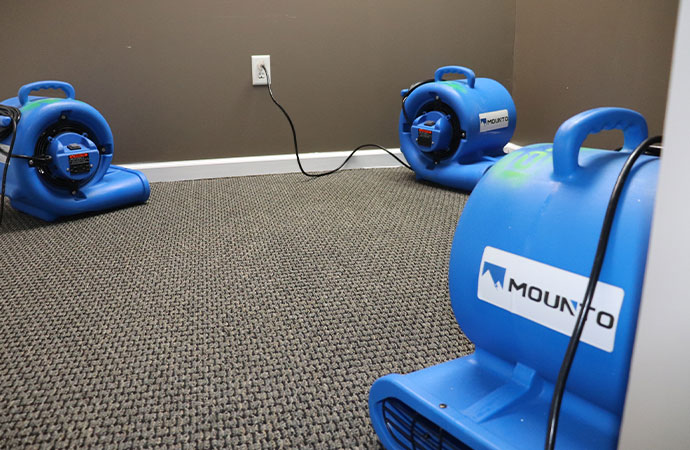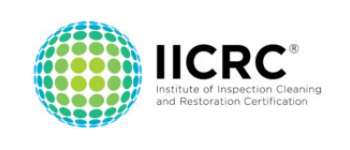How Much Does Water Damage Restoration Cost?
When your home suffers water damage, the first question is often, “How much does water damage restoration cost?” The question is a reasonable one, especially if the damage appears severe. This guide will help you understand what to expect if your home needs to be restored and how much you might be paying for the work.

The Average Cost of Water Damage Restoration
The cost of water damage restoration depends on multiple factors, though the average is typically $2,700. The type of water and the amount of time the home has been damaged will affect the cost. Clean water damage will cost about $3.75 per square foot for restoration, while gray water is about $4.50 per square foot. Black water will cost much more, about $7.00 per square foot.
Factors That Impact Water Damage Restoration Cost

The following factors may impact the extent of damage in your home and the final cost of restoration. Note that some may help decrease the overall cost, while others may exacerbate it.
Source of Water
Water damage is caused by either internal or external forces. An internal problem will likely require pipe repairs or the replacement of a hot water tank. The placement of your plumbing could impact the cost. Natural water damage has additional considerations. Storms can damage the exterior of the property, letting rainwater in, while flooding rainwater can cause sewage backups. In these cases, structural repairs may be necessary.
Amount of Water
A dishwasher may leak a few gallons of water, but a burst pipe could mean thousands. As the amount of water involved in the damage increases, so too does the cost to repair it. This is because larger amounts of water can fill up rooms more easily, reaching higher levels and damaging more than just your floors. It may even damage electrical outlets and appliances, necessitating repairs.
Size of the Area Damaged
Contrary to what you may think, a larger area can actually mitigate water damage. Small spaces fill up with water vertically more quickly, causing damage to cabinets and appliances. A larger area will likely result in only a few inches of water gathering. Be aware, though, that larger volumes of water — or larger amounts of sewage — can cause serious damage, no matter how large the space involved.
Type of Water
Water restoration specialists categorize water into three types. The first is clean water, or category 1, which poses no immediate health risk. Category 2, also known as grey water, has chemical, biological, or physical contaminants that have a slight health risk. The last, category 3, is termed black water and is extremely unsanitary. As water sits in your home, the chances of it becoming contaminated increases, turning from stage to stage the longer it sits. It’s therefore important to get the water cleaned as quickly as possible, both because of the cost involved to clean black water and the health risks it presents to both you and the cleaning crew. Some items may also need to be thrown out if they are damaged by grey or black water.
Length of Time Water Has Accumulated
As mentioned, the length of time that water remains in your home could increase the cost of the repairs. Carpeting, drywall, cabinets, and furniture can be dried and restored more easily if the water is cleaned up sooner, while letting them rest can cause warping and sagging. This drives up costs almost instantly.
Types of Materials Involved
Some materials are easier to dry than others, meaning that replacement may be your only option. For example, drywall is relatively resistant to water, while particle board cabinets will likely need to be replaced, thus increasing the costs.
Level of Accessibility
Special techniques and equipment will need to be used if water damage occurs in an area that is difficult to reach, such as an attic. It may even be necessary to dismantle portions of the house to properly dry it. In these cases, expect higher costs for restoration.
Mold Removal
Mold can grow if water is allowed to sit for too long, particularly if the water is not clean. Removal requires additional precautions to avoid contamination and damage to technicians’ health. Mold removal typically takes longer than other restorations, and it’s likely that additional materials, such as drywall and subflooring, will need to be replaced.
Amount of Reconstruction Required
Finally, the amount of overall reconstruction or remodeling required will affect your pricing. Some homeowners choose to use this opportunity to completely remodel areas of their homes, which increases the price but allows for a brand-new space to be designed. You can expect lower costs if you choose simply to replace areas instead.
Contact a Water Damage Restoration Specialist
Contact the specialists at Kingsley Water Damage Restoration for more information and to schedule a consultation. The firm’s team of insured and experienced technicians can assist with water damage restoration and mold removal in the Columbia, South Carolina area, removing water and returning your home to perfection as quickly as possible. Kingsley Water Damage Restoration provides emergency mold remediation and water removal services to ensure that prices stay as low as they can, saving you money while repairing your home.





